August 2025 Future Beef Newsletter
Upcoming Events
Weds 3rd Sept at 6pm: Future Beef farm walk on Michael & Niall Biggins’ farm, Ballynalty, Headford, Co. Mayo H91HTK6
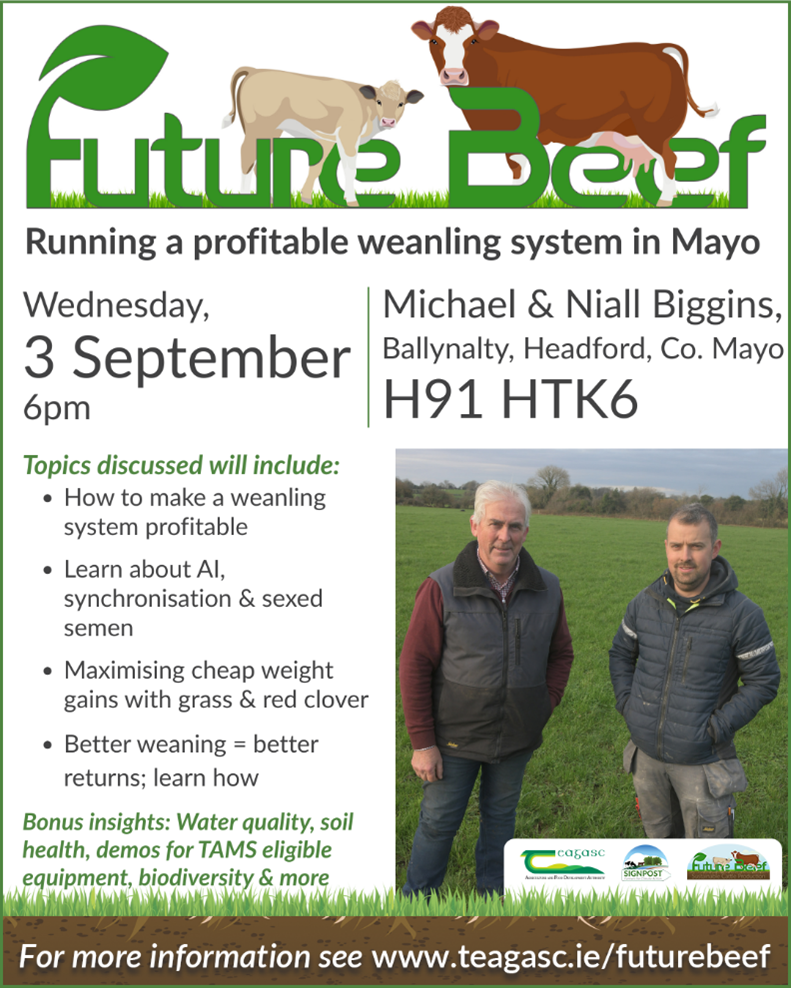
Reminders
If you are planning on selling weanlings:
- Weighing for SCEP must be completed before Nov 1st (5:30pm)
- Calves must be unweaned
- You must weigh at least 80% of eligible unweaned cow-calf pairs
- Pairs must be weighed on the same day
- Submit weights to ICBF within 7 days of weighing
- It’s worth 20% of your SCEP payment
Top Tips for August
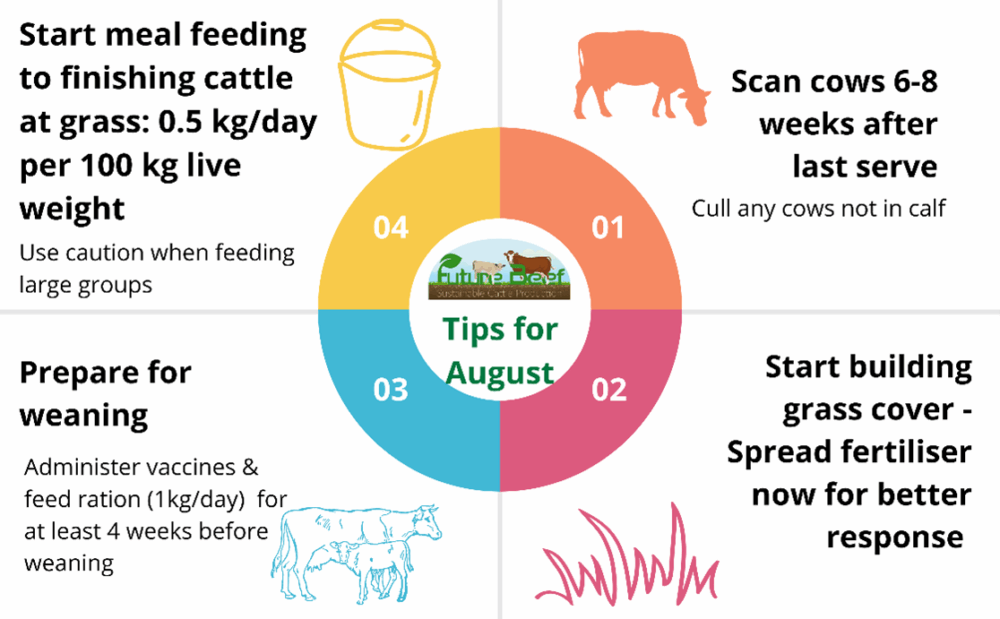
Farm Update – Michael & Niall Biggins: Efficient Weaning and Calf Performance
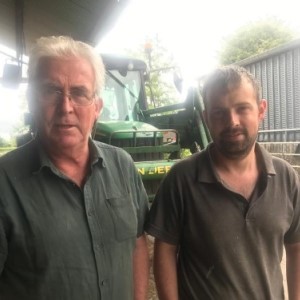
Michael and Niall Biggins
Michael and Niall farm a 67-cow spring-calving suckler herd in Ballynalty, Co. Mayo across 44ha in three land blocks. They use a combination of maternal AI bulls and a Charolais stock bull on the farm for breeding. Their calves are managed with a clear focus on health and performance. Bull calves are sold as weanlings, while heifers are sold as stores.
Weaning has started on their farm with preparation beginning months in advance. Calves were vaccinated against clostridial diseases in April, and a creep feeder was introduced in June. Using homemade creep gates between paddocks, calves graze ahead of cows on fresh grass. This forward creep grazing method reduces stress at weaning and supports better calf health.
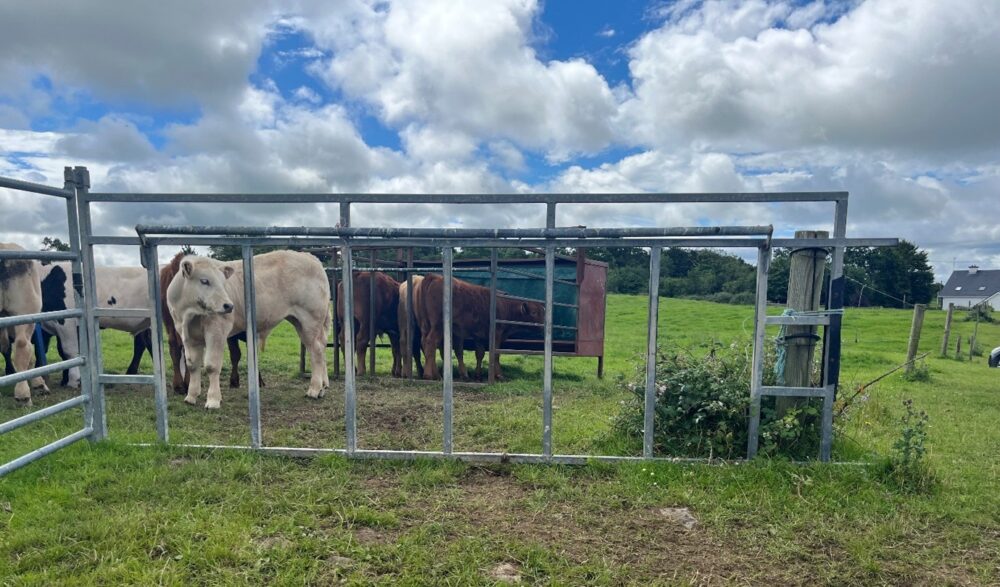
One of the creep gates in operation on the farm
The first vaccinations against IBR and RSV/PI3/Mannheimia are scheduled for August, followed by booster shots 4–6 weeks later. Weaning will occur at least two weeks post-booster to ensure optimal immunity.
Cows and calves were weighed on July 10th for the SCEP scheme. According to ICBF data, bull calves are gaining 1.15 kg/day and heifers 1.1 kg/day. Predicted 200-day weights are 277kg for bulls and 263kg for heifers. The cows averaged 634kg which leaves the farm’s weaning efficiency at 44%, exceeding the 42% target.

Some of this year’s calves with their cows
This Mayo suckler system highlights proactive calf health, strong performance, and effective weaning practices. Read more about Michael & Niall’s latest update.
Watch the video below to hear more about Michael & Niall’s dosing strategy and some details of their upcoming farm walk: Future Beef Farm walk video.
Farm Update: Efficient Suckler-to-Beef System in Youghal: The McCarthy Family Farm
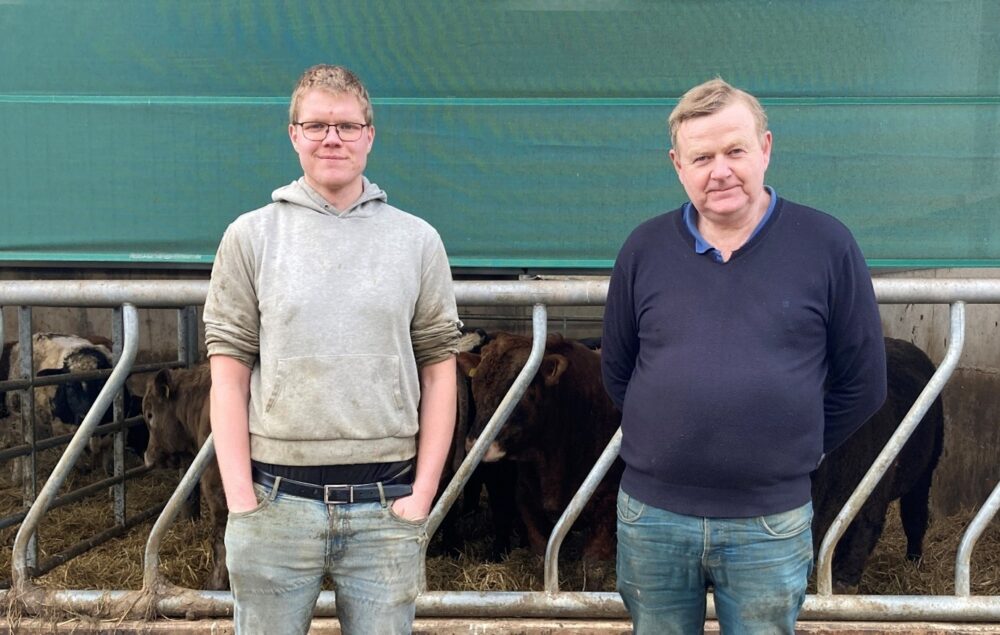
Donnchadh & Eamon McCarthy
Eamon McCarthy and his son Donnchadh are running a highly efficient suckler-to-beef system in Carrigeen, Glendine, Youghal, Co. Waterford. Their beef enterprise consists of 55 suckler cows, with a split calving system—60% in spring and 40% in autumn.
The McCarthys finish their male calves as under-16-month bull beef, while heifers not retained for breeding are finished at 18–20 months. Replacement heifers are homebred, allowing for better genetic selection and long-term sustainability of the herd.
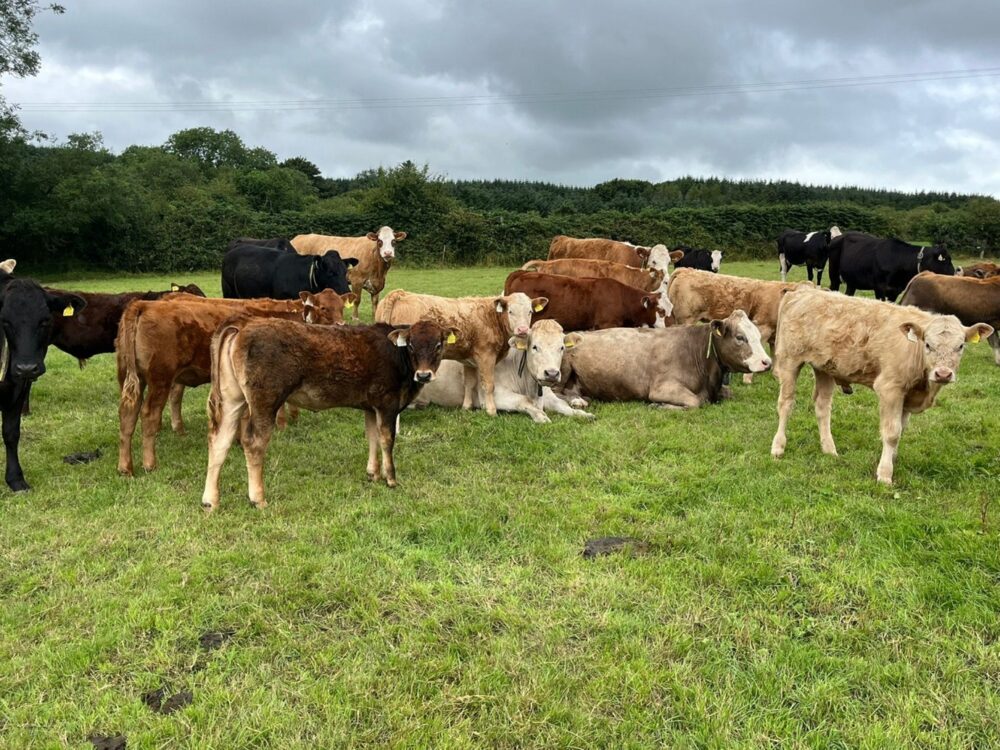
The McCarthys are focusing on key tasks this month:
- Fodder Budgeting: Completing a detailed fodder budget and developing strategies to correct any deficits ahead of winter.
- Grassland Management: Managing grazing systems after a period of reduced grass growth, ensuring optimal recovery and utilisation.
- Reseeding Paddocks: Rejuvenating underperforming paddocks with reseeding to improve grass quality and yield.
- Vaccination Planning: Implementing a pre-weaning vaccination programme targeting viral pneumonia in calves.
- Herd Scanning: Scanning spring-calving cows to identify empty or non-productive animals early.
- Body Condition Monitoring: Ensuring autumn-calving cows are at the correct body condition score (BCS) ahead of calving.
- Pre-Calving Health Measures: Completing herd health tasks, including fly control to prevent summer mastitis and mineral supplementation.
- Infrastructure Development: Building a new roofed slatted unit to improve winter housing facilities.
- Diet Transitioning: Gradually transitioning 2024 autumn-born bull weanlings onto their finishing diet.
Eamon and Donnchadh’s approach reflects a strong commitment to animal health, grassland management, and sustainable beef production—key pillars for success in Irish suckler farming today.
Read more about the McCarthys.
Technical Update – Weaning Checklist for Suckler
Farmers
Planning for weaning now is essential to ensure a smooth, low-stress transition for calves and to protect future performance. Poorly managed weaning can lead to disease, weight loss, and setbacks. On one Future Beef farm, structured weaning saw calves 45kg heavier at housing. This is especially important when calves are destined for sale, where performance matters most.
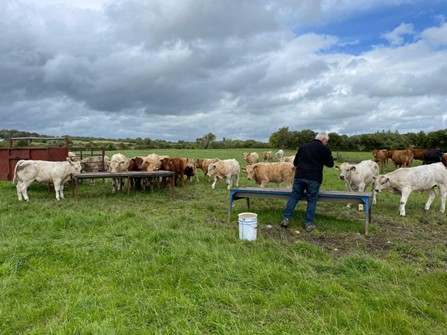
Creep feeding meal to calves will help to reduce stress at weaning
- Start vaccination programmes in early August. Clostridial vaccines and pneumonia vaccines (against Mannheimia, RSV, and PI3) often require 4–6 weeks to complete. Avoid overlapping stressful procedures like castration with vaccination. Ideally, castrate at least 4 weeks before weaning or 2 weeks post-housing. Clostridial boosters are essential at the time of castration to prevent tetanus.
- Introduce creep feeding from mid-August to get calves consuming 1kg/day pre-weaning. After weaning, increase to 2kg for steers/heifers and 3kg for bull weanlings. Use troughs and low-stress handling to familiarise calves with feeding facilities and reduce fear.
- Prepare housing and fencing in advance for a secure and stress-minimised environment. Use methods like forward creep grazing or gradual cow removal for weaning. Regular parasite monitoring is critical; treat based on FEC results and signs like coughing or scouring.
- Aim to wean during settled weather to reduce respiratory stress. Legal compliance around castration methods and anaesthesia must also be followed carefully.
Effective weaning planning now supports better liveweight gains, reduced disease risk, and stronger returns — all key for a profitable suckler or beef enterprise in Ireland.
Read more details about the strategies outlined above (pdf).
Technical Update – Finishing Suckler Cattle at Grass: Is Feeding Concentrates Worth It?

Cattle eating ration at grass
For farmers aiming to finish cattle off grass this autumn, supplementing with concentrates can deliver strong performance gains and reduce winter housing time. Autumn grass is typically lower in nutritional value compared to spring grass, and poor weather can limit grazing. However, grass remains cheaper than silage, making targeted concentrate feeding an attractive option.
Teagasc research at Grange shows that feeding concentrates at grass can significantly improve carcass weight and fat scores, especially when grass is limited. A key factor is the substitution rate—how much meal replaces grass in the diet. When grass is scarce, concentrates boost total dry matter intake and energy, improving weight gain.
In trials with suckler steers, feeding 5kg of concentrates daily for 95 days increased carcass weight by 32kg and daily live weight gain from 0.34kg to 1.04kg. At a carcass price of €7.50/kg and meal costing €320/tonne, that’s a net gain of nearly €100 per animal—excluding savings on silage and housing.
Moderate supplementation—around 0.5kg per 100kg of live weight—offers good returns when grass is limited or low in quality. Feeding strategies should match grass supply, animal type, and market goals.
Safety Warning: Feeding large groups of cattle at grass carries risk. Avoid being in the pen during feeding. Use fenced-off troughs, feed under the wire, or automatic feeders for safer handling.
Read more about feeding concentrates to finish cattle here (pdf).
The Beef Edge Podcast
Teagasc Grass10 Manager, John Maher has the monthly update on the Beef Edge podcast discussing grass management tips for the month ahead. Listen & Follow on Apple/Spotify.

